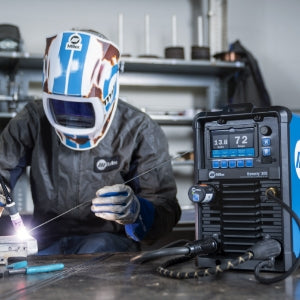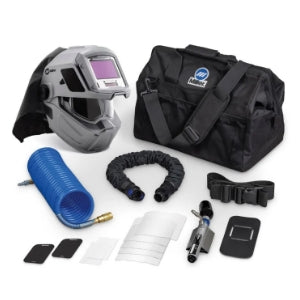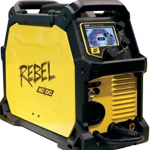When the temperature drops, a lot of welders usually have two questions: Will the low temperatures hurt my machine and how will this affect my welds? These are valid questions and ones that many welders in mild or warm climates rarely have to think about. However, if you get hired for a job somewhere freezing-cold year-round, it's best you know how to deal with cold welding before you make a mistake.
The bottom line is that cold-weather welding is more complicated, requiring more patience and additional equipment. Frustrating though it may be, it's nothing that an experienced welder can't handle. If you're interested in learning more about cold-weather welding, continue reading below.
Can low temperatures damage your machine?
It’s a logical concern. Virtually every electronic device is supposed to be stored and operated in a dry, semi-warm environment. But most welding manufacturers understand you can’t keep a 300-pound welder generator in your living room all winter. That’s why any good welding machine is designed to withstand some pretty extreme temperatures (we’re looking at you, Alaska). If you’ve gone with a reliable brand like Miller, Lincoln, ESAB or any of the others we carry, your rig should be able to withstand some cold ones (though please double-check your machine’s manual).
Generally, your worst enemy isn’t the cold. Dust and moisture are the boogiemen under every welder’s bed. It’s a bad idea to leave your welder uncovered all winter with pollution and storms blowing dust around. In fact, it’s the #1 reason-welding machines prematurely bite the dust (excuse the pun). If you don’t already have a cover, it’d be a good idea to pick one up.
Moisture is the other deadly sin. Water causes two major problems with electronics. Water can create connections between electronic circuits, causing shorts that can damage or completely destroy your machine. Water can also cause corrosion, which can limit performance and eventually cause major issues. In most cases, welding machines can withstand a fair bit of humidity. However, if you have a heat wave after a particularly cold night, this can create a large amount of condensation. If you’re worried, it’s recommended to move your machine into a dryer location like a closed garage.
Can You Weld in Cold Weather?
The miracle of welding only works thanks to extreme temperature changes that melt metal and cause fusion to happen. So if you think cold temperatures won’t make an impact, you’re in for a frustrating ride.
Welding cold metal is no walk in the park. Freezing temperatures will cause your welds to cool much faster, which can cause cracking and inadequate penetration. Cold weather also means a bigger difference in temperature between your weld and your workpiece. This can cause severe warping.
An easy solution to this is pre-heating. Essentially the idea is that if you can’t get your workpiece somewhere warm, you'll need to heat it up before you start welding. There are several ways to do this. You can use an oven, an open flame such as a torch, or more advanced methods like resistance heating and induction. Most experts will pre-heat to at least 50 to 60 degrees Fahrenheit.
In order to minimize warping, it’s also smart to clamp down your piece as much as possible. This helps prevent your base metal from twisting and bending as the molecules heat up and cool down. Our favorite cold-weather welding gear is strong hand clamps. The amount of time and frustration these secret weapons have saved us makes them easily worth the price.
Cold-Weather Welding is Possible
Cold-weather welding is unavoidable, and if you live somewhere where it's cold most of the year, you'll have to get comfortable with welding in freezing temperatures. Thankfully, it's not impossible. Cold-weather welding is doable, but you'll need the help of techniques like pre-heating or equipment such as hand clamps.
Click the button below to learn more and let the community know what other tips and tricks you use to weld during winter in the comment section below.





